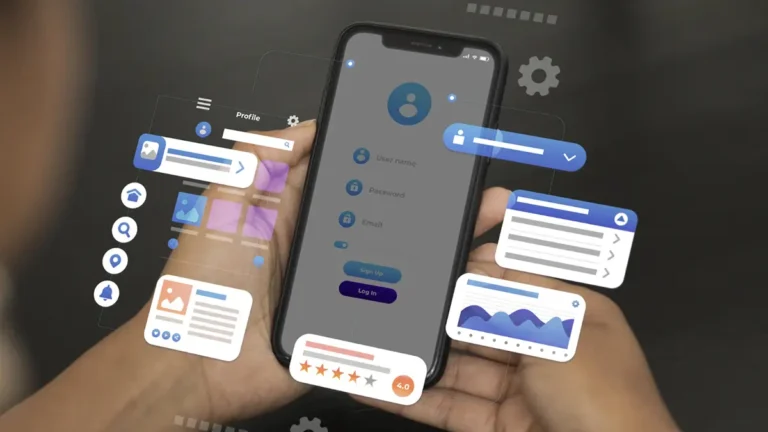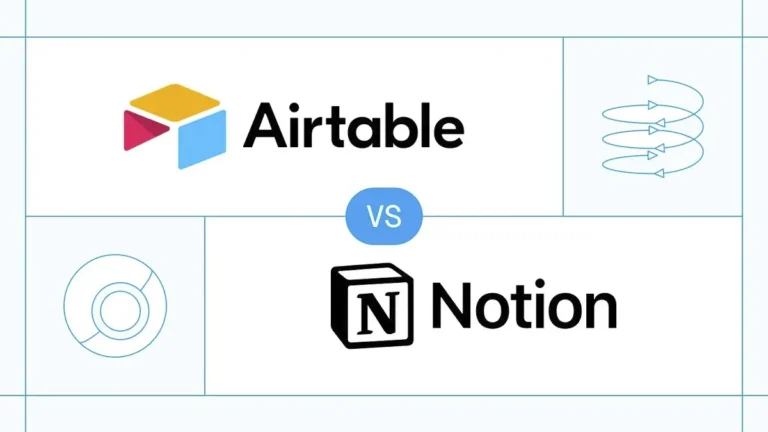The Ultimate Guide to RPA vs BPA: Which Automation is Right for You?
Many quick changes are occurring in the business sector. All these changes are the result of increasing demand for efficiency, accuracy, and lower cost. AI brings an effective solution in terms of automation. It is truly emerging as a transformative force. Therefore, understanding RPA vs BPA is crucial.
Now, businesses do not need any manual interventions. RPA (Robotic Process Automation) and Business Process Automation BPA) are changing the game for the better.
These processes help businesses simplify and organize their day-to-day tasks. However, both methods work differently.
We will discuss the difference between RPA and BPA in this blog. You will learn about their strengths and core differences. Learn if you should use both in combination or as individual BPA tools to achieve unheard-of operational excellence.
Let’s get started to learn about RPA vs BPA!
What is RPA?
Business Process Management RPA automates user interface-based work that is repetitive, high volume, and rule-based, thereby imitating human actions.
RPA automates repetitive tasks that follow set rules. It works just like a human would do it. You can consider RPA as your digital teammate.
RPA has software robots that replicate human activities. It mimics their behaviors and interactions with digital systems.
These “bots” can automatically log into applications. You can use these to enter data or extract any information from the system. It can execute multiple predetermined actions without any human help.
An RPA business software automation is programmed to read email attachments with incoming invoices. Also, it can extract some particulars like invoice number, vendor name, amount, and date.
It can log into an accounting software system and enter the data accordingly. The bot can even flag an invoice for human review if the amount exceeds a certain threshold.
Key characteristics
Here are some key features of RPA that make it the top choice for businesses looking to automate their operations:
- Rule-based
RPA works on predetermined rules and logic. It truly thrives in tasks that are clearly defined and never change.
- Non-invasive
RPA interacts with current applications from the user interface. It works just like a person does. Therefore, there is no need for complex API integrations or changes in the existing IT infrastructure.
- Fast Deployment
You can implement RPA solutions quickly. It yields quick ROI for specific tasks.
- Scalable (at task level)
You just need to set up the bot once for any task. Then copy the task to handle more of that specific task.
What is BPA?

BPA is the systematic automation. You can define business process automation as it works on a complete, end-to-end automated business process. This method normally involves multiple systems, people, and decisions.
Business Process Automation (BPA) looks at the bigger picture of the task. It doesn’t just focus on small or separate steps. It considers the entire workflow from start to finish. Therefore, it uses multiple systems, departments, and external parties.
The goal of BPA is to improve and transform your workflow. It frees up resources and makes things more productive. Additionally, it helps to run operations smoothly. Automate BPA carefully arranges automated tasks alongside human work.
The best example of BPA business process automation is the customer onboarding process. It consists of multiple steps like:
- Application Submission
- Identity verification
- Background checks
- Credit assessments
- Contract generation
- Account capitalization in multiple systems
- communication with the customer.
This is ideal for automating information flow, triggering notifications, and approvals, and performing compliance. Additionally, it reduces onboarding time and minimizes errors.
Traits
It has the following traits:
- End-To-End Process Optimization
BPA automates business processes. It takes a look at the optimization of an entire business process from start to finish, not isolated steps.
- Process Mapping and Redesign
BPA typically starts with some level of process understanding so process maps are often created or sometimes even a redesign of the current process is done to identify waste and improvement opportunities.
- Orchestration and Workflow Management
Business process automation tools provide the ability to “orchestrate” a complex workflow as well as manage dependencies of each task and provision whether the process is initiated by a system or human actor, or requires a different routing or information exchange.
- Integration
BPA often requires deep integration with multiple enterprise systems (for example, ERPs, CRMs, databases) to enact the process and ensure the required flow of information.
- Strategic Gains
The purpose of BPA is to offer significant strategic benefits. It helps improve customer experience and reduce operational costs. Moreover, it can improve compliance and reduce time-to-market.
Read More about Best Automation Software to Streamline Tasks and Save Time in 2025
RPA vs BPA: Side-by-Side Comparison
Let’s learn about both to know the unique characteristics and the key features of RPA vs BPA:
| Feature | Robotic Process Automation (RPA) | Business Process Automation (BPA) |
| Scope | Automates rule-based, repetitive tasks at the user interface level. | Automates and improves complete end-to-end business processes, often across multiple departments and systems. |
| Focus | Efficiency and accuracy of individual tasks. | Optimizing the overall process, work efficiency, and tracking business outcomes more strategically. |
| Integration | Non-invasive, interacts at the UI level (mimics human activities). | Usually requires some deep integration with the underlying enterprise systems (APIs, databases). |
| Complexity | Business process automation vs RPA, it is relatively simpler for individual tasks. | Can be complex as a larger model, and often involves redesigning business processes, integrating enterprise systems, and orchestrating multiple steps (often requiring human intervention). |
| Cost | Continuous lower initial investment per bot/task. | May represent higher upfront costs due to the breadth of the process, enterprise system integration, and re-engineering of business processes. |
| Speed of Imp. | Faster deployment for specific tasks and faster return on investment. | Longer implementations due to effort toward analysis, design, and integration often result in a bigger overall transformation. |
| Scalability | Scales horizontally by adding more bots for the same task. | Has the potential to scale vertically and horizontally by optimizing and automating whole processes, so while impacting one or more systems, it reflects on broader organizational efficiency. |
| Decision-Making | Rule-based decision-making; exceptions are usually routed back to old humans. | Can often use complex logic where decisions are made, with approvals, and may even integrate machine learning for more intelligent process routing and optimization. |
| User Interface | Generally, does not involve user interfaces for end-users, and acts in the backend. | Also can bring together user interfaces (portals, dashboards) to allow human interaction, task, and approval management within an automated process. |
What Are the Key Differences Explained?
It shows the major differences in the scope of business operations automation. You can see that RPA is microscopic, and it is the best choice for single and repeatable tasks.
Similarly, BPA is macroscopic. It aims to change and automate the entire workflow that involves different tasks and systems.
Integration Method
RPA is surface-level work with applications through the UI. It gives you a solution that works like a human interacting with a computer. BPA works on a much deeper level.
Its use case usually needs an integration with the underlying systems directly. It uses APIs or a database-level connection to provide easy access to information.
Tactical versus Strategic
RPA is more of an ad-hoc tactical solution for achieving efficiency on a short-term basis in constrained areas of the business.
BPA is more like a strategic initiative. It can achieve a larger objective for the overall organization by redesigning and optimizing core business processes.
Complexity of the implementation
Implementing an RPA does not take too much effort as far as single-tasking is concerned. However, since BPA requires end-to-end analysis, process mapping, and system integration; consequently, this inevitably raises the level of complexity.
When to Use RPA vs BPA?
Choosing the right automation approach between RPA vs BPA depends on your specific needs and goals. Here are some terms to consider for business process automation robotics:
- Process Nature- Are your processes repetitive and rule-based tasks (RPA) or complex and multi-step workflows spanning multiple systems and decisions (BPA)?
- Timeframe and ROI- Do you want quick wins and immediate savings for certain tasks (RPA) or transformative improvements for the whole process in the long term (BPA)?
- Existing Tech Stack– How well do these systems integrate otherwise? Does the use of automation require user interfaces (RPA) or deeper API connections (BPA)?
- Budget and Resources– What resources can you allocate? In general, RPA has a lower upfront investment per bot, whereas BPA typically incurs larger fixed costs because of its scope.
- Strategic Objectives- Is the process aimed at removing manual labor in certain areas (RPA) or, by improving significantly, key improvements in business functions (BPA)?
When RPA Proves Effective:

High-volume repetitive tasks include data-entry-even report generation, as well as copying information from one system to another.
RPA also works for rule-based processes. It comes when the steps are defined and predictable. A legacy system that does not have APIs can have its processes automated with RPA using the interface of the system as a bridge. Quick-win cases are those that promise relatively quick ROI for some functional areas.
Temporary solutions, which are for specific processes that are going to undergo a larger makeover, can be expected for a time.
When BPA Is The Better Choice:
Complete business processes, such as employee onboarding, procurement to payment, and fulfillment of customer orders. Process improvement and transformation eliminate barricades and make processes collaborative rather than just automating them.
Instance enters here as the event in case multi-mode integration becomes critical for seamless data flow across different enterprise applications (ERP, CRM).
More customer satisfaction is talked about here when ensuring the same processes would improve a company’s customer experience.
Those processes would ensure a tighter grip on the rules and a clear audit trail. It is part of a bigger digital transformation picture.
Struggling with precise business planning? Here is what you need to know about Innovative Marketing Strategies for Beginners
How do RPA and BPA Complement Each Other?

RPA and BPA are not entirely oppositional. BPA gives a theoretical view of managing operations. RPA deals with a limited repetitive task within that framework.
Employee Onboarding
BPA creates the workflow events. It gets triggers from HR, manages approvals, and routes tasks to employees in IT, HR, and facilities.
RPA handles specific jobs. It is one bot of RPA bot that logs into the IT system to create user accounts. It gives access to the benefits portal to pre-fill data for new hires, and another generates purchase orders for equipment.
Advantages of Merging Approaches:
RPA vs BPA gives you the following advantages when combined:
- Better Efficiency
BPA orchestrates while RPA executes the repetitive task. It is done in such a manner that these become highly efficient end-to-end processes.
- Bridging the Integration Gaps
An RPA is highly useful in linking and integrating some of the old systems that lack APIs.
- Increasing Agility
Get those quick RPA benefits even with larger schemes of BPA change.
- Scalability and Resilience
Automation is strong by design. It is built on a distributed paradigm.
- Faster Value Time
RPA provides immediate results. It can create the momentum for wider BPA.
- Total Digital Transformation
It gives you tactical efficiency and strategic optimization.
Benefits & Challenges

You can have clear benefits from the automation implementation through RPA or BPA. It offers unique advantages and potential hurdles. You can assess suitability by understanding these benefits and challenges:
| Benefits | Challenges |
| RPA | |
| It offers rapid ROI for specific tasks. | Limited scope (task-level) |
| Get better accuracy | fragile to UI changes, |
| Quick implementation of rule-based processes. | Ongoing maintenance |
| It doesn’t fix underlying process issues. | |
| BPA | |
| End-to-end process optimization | Higher initial investment |
| Excellent long-term efficiency | longer implementation time |
| Better compliance | Complex integrations |
| Better process visibility. | Process re-engineering |
Best Practices for Implementation
The successful implementation of RPA/BPA needs clear objectives. You need to follow a different process assessment with the right technology choice. You can simply start with a pilot and then build a Center of Excellence. It will manage change effectively, meanwhile, monitor its optimization continuously. You need to make security your top priority. Also, it must comply throughout your automation journey.
Future Trends: AI + RPA + BPA
The Brave New Automation Future is Intelligent, Adaptable, and Holistic. It is simply driven by the synergy of RPA vs BPA. Fueled by AI, RPA, and BPA, the future of automation brings exciting new trends:
- Hyper-automation: Total enterprise-wide automation through orchestrating AI, ML, RPA, and low-code.
- AI-enabled automation: Just standard AI/ML inclusion for intelligent decision-making to deal with unstructured data handling and continuous learning.
- Low-Code/No-Code Platforms: Empower people to rapidly build automation.
- Process & Task Mining: A data-based analysis of where most intakes are needed for automation.
- Cloud-Native Automation: Migrate applications to the cloud for scalability, flexibility, and availability.






